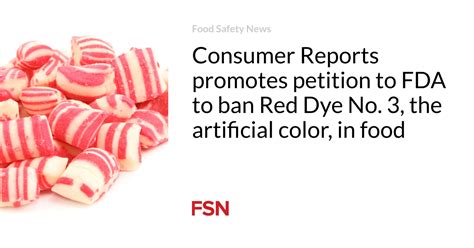The bright cherry-red hue of Red No. 3 has adorned a variety of sweet treats, from candies to cakes, for years. It was a go-to synthetic food dye used in numerous products like candy, cookies, and even certain medications. However, on January 15th, the U.S. Food and Drug Administration (FDA) made a significant announcement—a ban on Red No. 3 in foods, beverages, and drugs.
Studies and Bans
This decision came in response to a petition filed in 2022 that raised concerns about high levels of exposure to Red No. 3 causing cancer in rats. While this sparked the FDA’s action against the dye, it’s essential to note that scientific evidence regarding its harmful effects on humans is inconclusive.
In fact, human exposure to Red No. 3 is significantly lower than what was administered to rats in these studies. Moreover, various other research studies conducted on both animals and humans have failed to replicate the cancer-causing results found in rats.
Regulatory Restrictions
Despite the lack of definitive proof linking Red No. 3 consumption with health risks for humans, regulatory bodies like the FDA are bound by strict laws such as the Delaney Clause under the Federal Food, Drug and Cosmetic Act enacted back in 1960.
This clause prohibits the use of any food or color additives that are known to cause cancer either in animals or humans—an aspect that led to the banishment of Red No. 3 from consumable products.
Following California’s lead wherein they banned Red No. 3 in 2023 along with six other synthetic dyes due to concerns about neurobehavioral impacts on children rather than cancer risks—the FDA took their stance based on cautionary principles set forth by existing legislation.
The Path Forward
While some may breathe a sigh of relief at this ban thinking it will immediately rid grocery shelves of all items containing red dye—hold your horses! Manufacturers have been given a grace period—two years for food producers and three years for drug manufacturers—to reformulate their products without using Red No. 3.
It’s worth noting that these synthetic dyes aren’t crucial components providing nutritional value or acting as preservatives; rather, they serve primarily as colorants aimed at enhancing visual appeal rather than nourishing qualities.
So fret not if you’re worried about missing out on your favorite colorful snacks; rest assured they’ll be back albeit with safer alternatives post-reformulation!
As we navigate through these changes within our consumables’ landscape let’s keep an eye out for future developments ensuring both safety and enjoyment when indulging our taste buds!
If you have any thoughts or queries regarding this fascinating topic around food coloring additives feel free to share them – after all discussions spark new insights!









Leave feedback about this